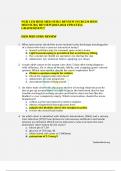Samenvatting
Summary States versus Markets Schwartz chapter 1, 3, 4 & 5 (Political Economy midterm 2019)
This is a summary of chapter 1, 3, 4 and 5 of 'States versus Markets' by Herman M. Schwartz. These chapters are part of the required readings for the course Political Economy (that is part of the bachelor Political Science) at the Univeristy of Amsterdam
[Meer zien]














